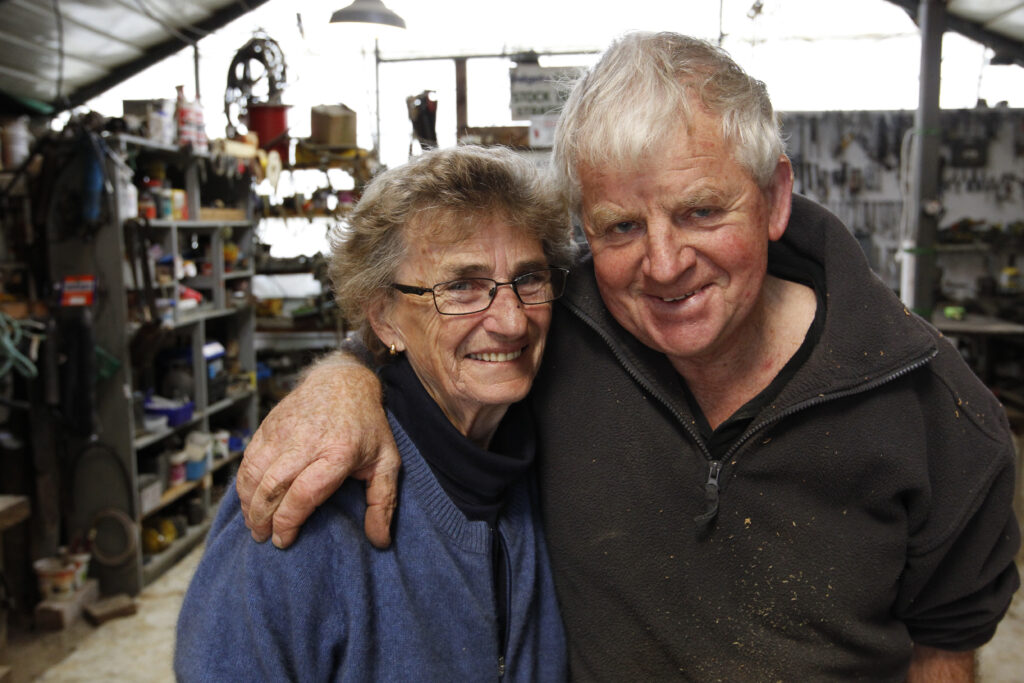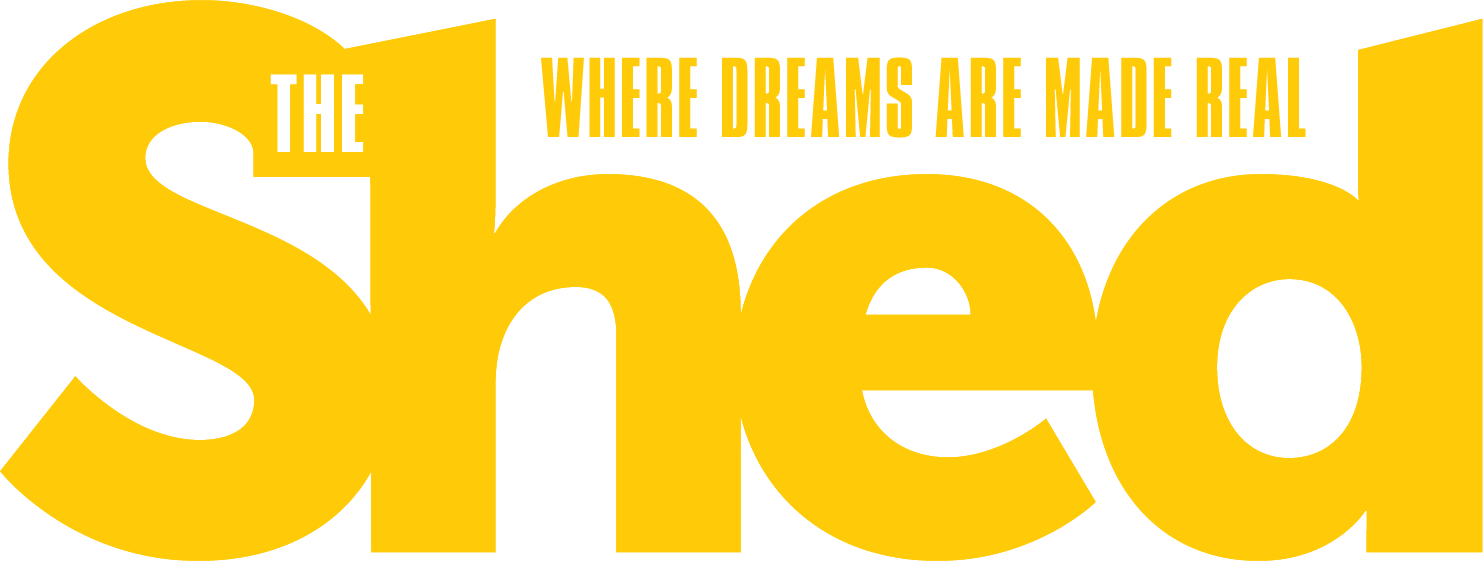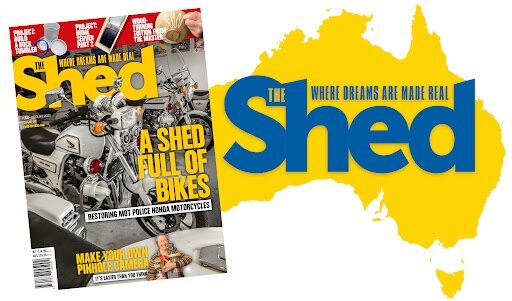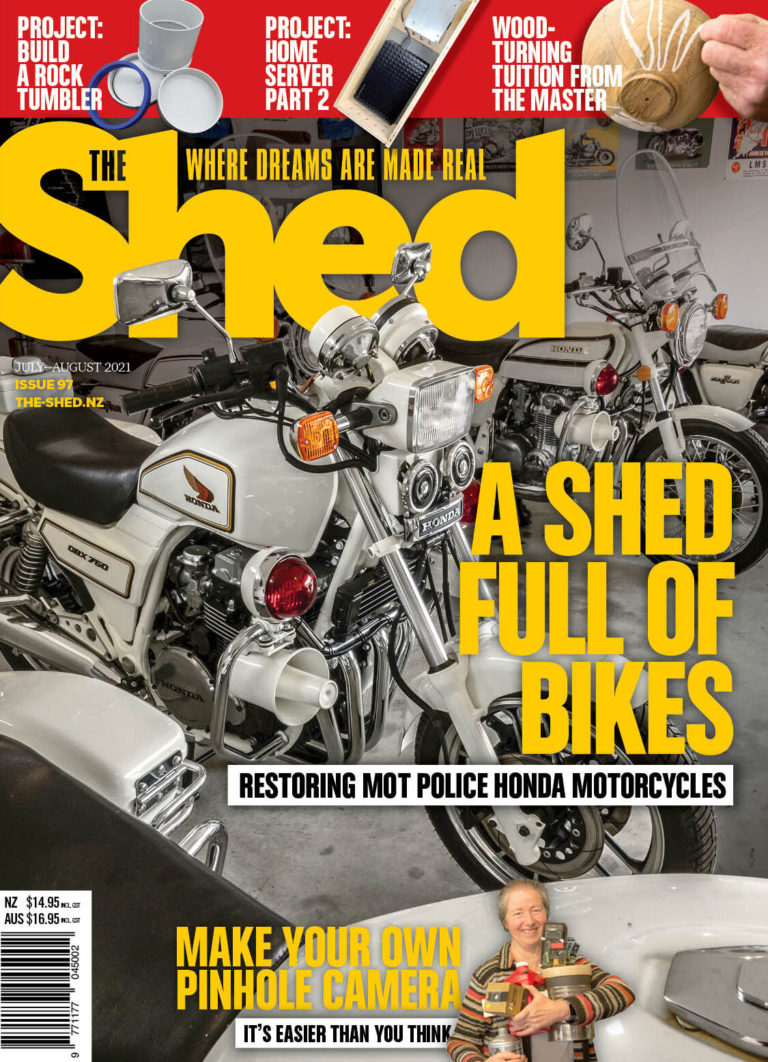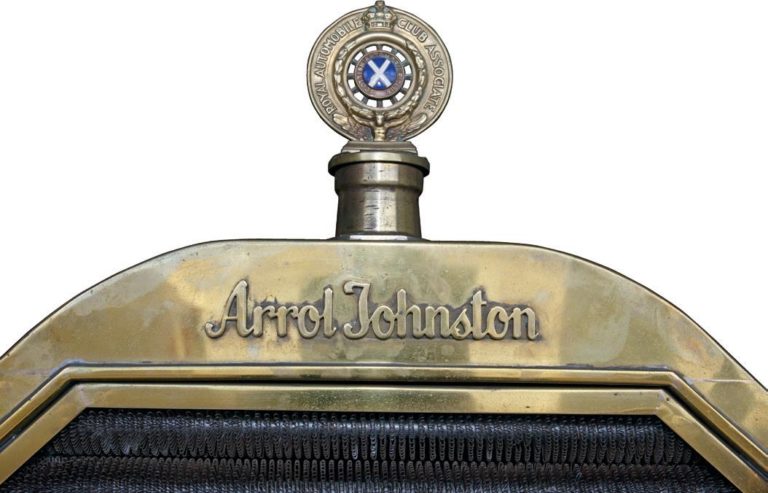A tale of “his” and “hers” sheds
By Ray Cleaver
PHOTOGRAPHS: ROB TUCKER
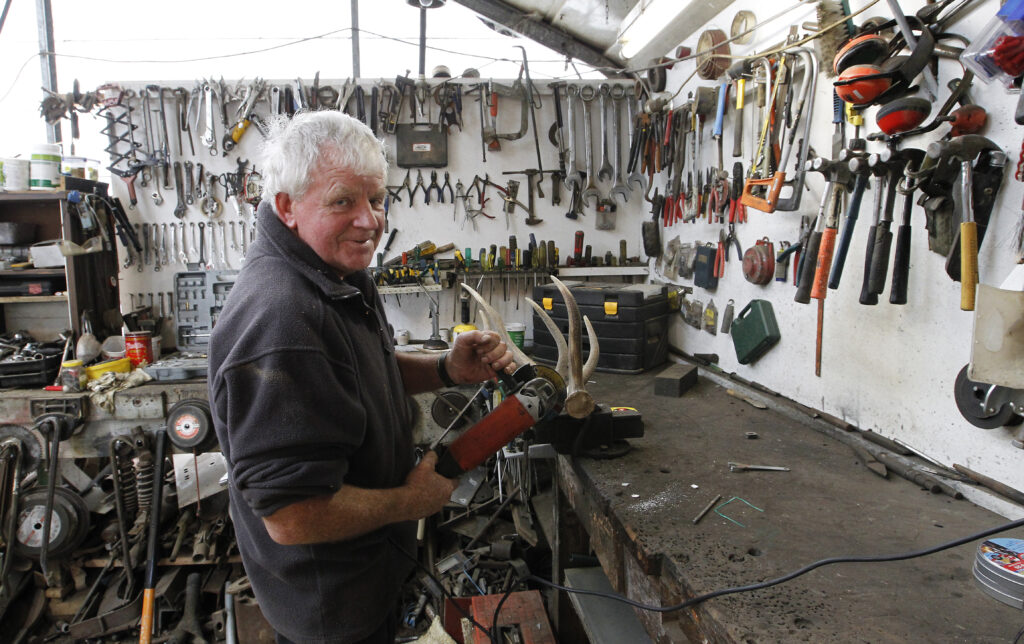
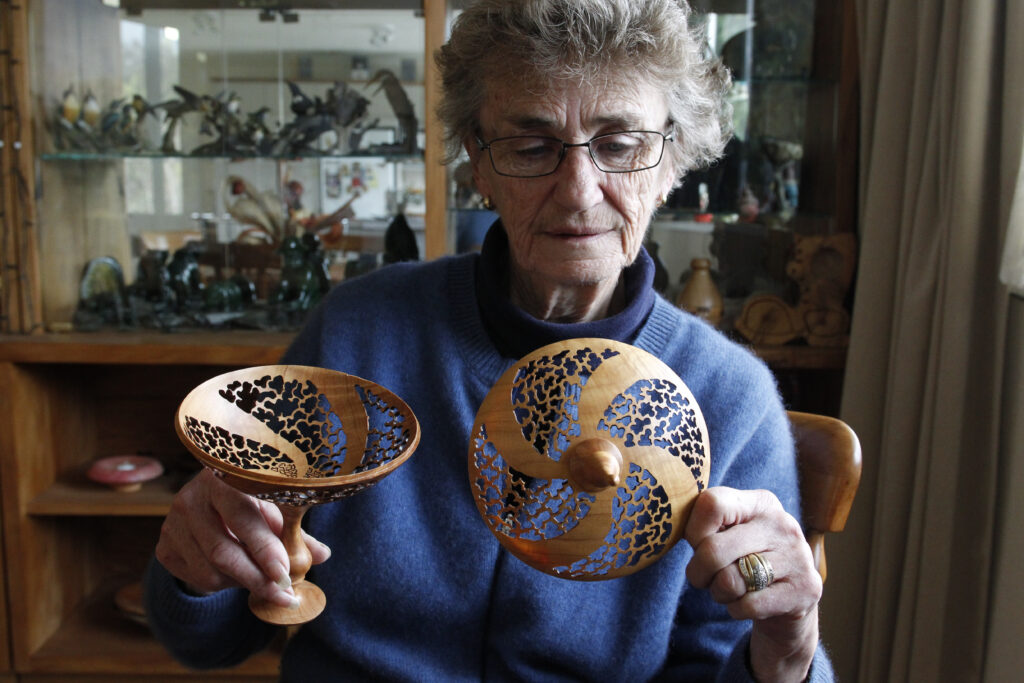
When Ross Vivian heads into his Stratford shed he has to pass through his wife Heather’s workshop. The Taranaki couple are both passionate about wood—Ross carves it and Heather turns it. Retirement is not a time for this couple to put their feet up. They are enjoying exploring their own creativity and are busier than ever.
Ross has been a hunter, farmer, logger, inventor and bushman. His mainly self-taught skills developed during 70 years have now come together in his carving and the days are not long enough to complete the projects he has in mind. Heather, a creative, award-winning woodturner, has been working her lathe for 30 years, winning national accolades in a field that has been the domain of men for aeons. Over time, she has finely developed her craft, whether working big, burr-wood platters more than 500 mm across or tiny turned pieces a few millimetres thick.
The couple’s spacious lounge is like another world. Trophy heads from Ross’s hunting days adorn the walls: deer, thar, chamois, a wild bull (he shot as it came out of the bush and charged him), wild boars, stuffed birds and even moose antlers. From the ceiling hangs a huge deer antler chandelier he has made. His carvings and coffee tables and Heather’s wood-turned pieces are everywhere. Rows of her platters, made of all sorts of wood, sit on shelves along with some of her delicate filigree urns adorned with colourful dragonflies.
Despite not having moved from Taranaki their whole lives, the couple have had a colourful and busy life.
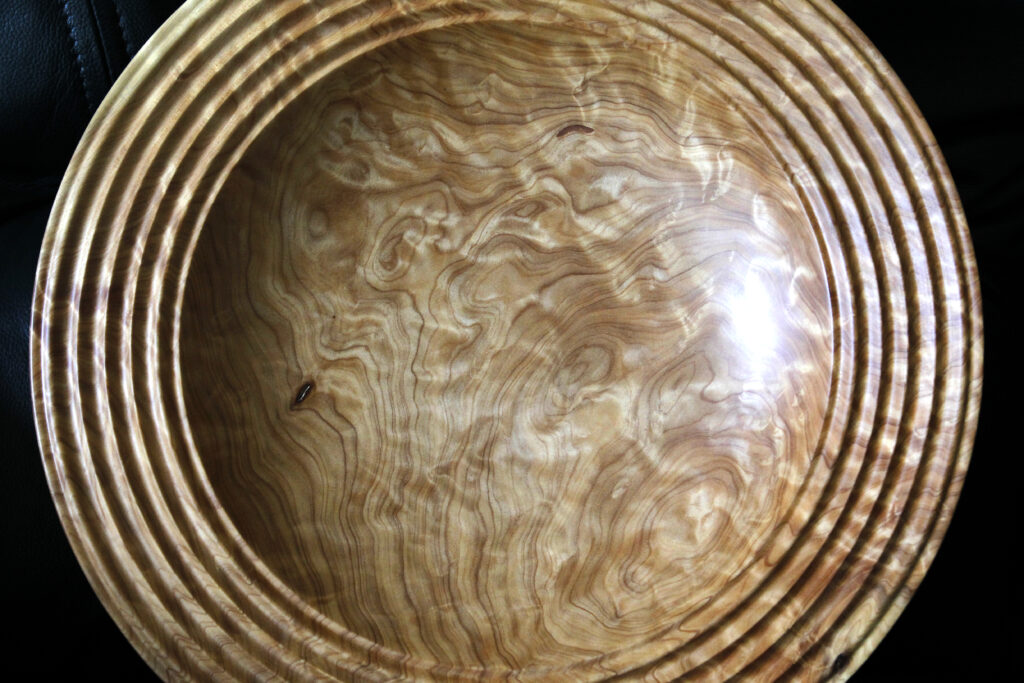
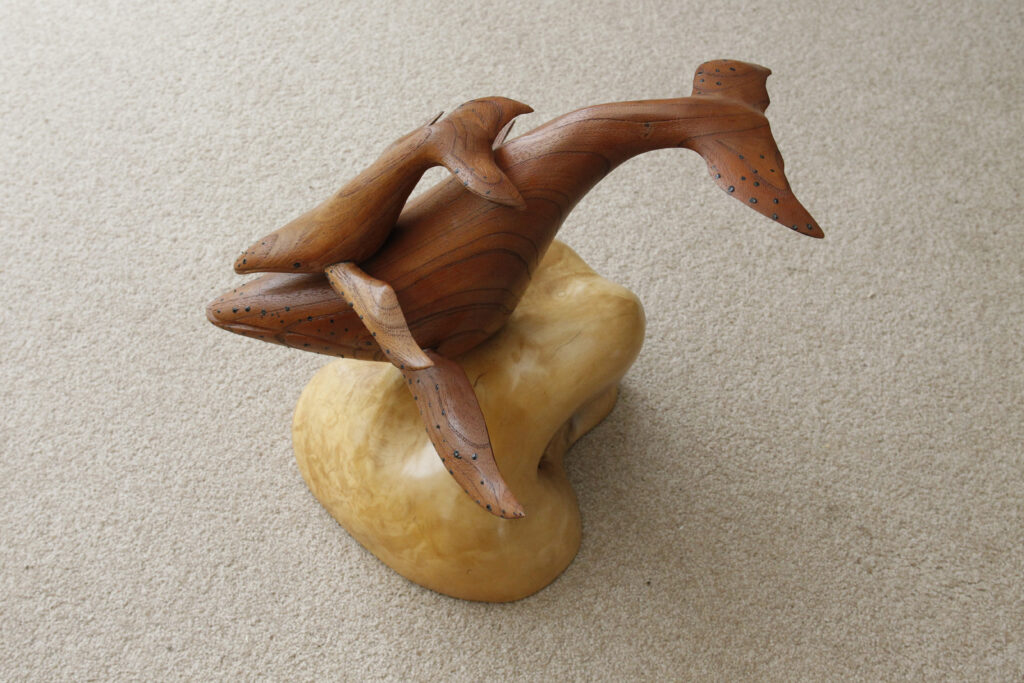
Taranaki boy
Ross was born and raised on a dairy farm at Wharehuia in Central Taranaki. He still remembers horses and carts taking the milk to the Beaconsfield Rd factory and his father buying the first tractor in the district — in Allis Chalmers B— just after World War II. After two years at Stratford High School, he left school at 15 to work on the farm.
“When I left school the old man brought me my own welder – a Young, 180 amp single phase model.” He still has it and still uses it regularly 55 years later.
Ross then got into contracting for hay and silage making and hedge-cutting. He bought a Fergusson 35 tractor and even built his own hedge-cutter but that’s another story.
Ross has always been keen on hunting, since the next door neighbour first took him pig hunting when he was 15. “We used to hunt pigs out the back of Eltham and Stratford. I had an Austin A40 and an old WWII .303 rifle. I loved it.”
He eventually bought the farm off his dad, sold half, and at the age of 26 got into deer farming on the remaining 20 hectares, running captured fallow and red deer. This was the late 1960s, and farming deer was pretty well unheard of. They built their own saleyards, and many people brought deer to the sales. Ross says it got “quite big. During one two-day sale, we turned over $2 million.”
He spent a lot of time in Fiordland getting into deer recovery, catching deer live from helicopters using nets and tranquiliser guns, which he describes as pretty exciting. “We were even catching wapiti. I once tried bulldogging, jumping from the chopper onto the deer’s back.”
He travelled to Canada and the UK and for a while was the Dalgety Crown deer consultant for the lower half of the North Island.
In 1986, Ross and Heather set up the Rossadon Hunting Lodge near Whangamomona in eastern Taranaki. They stocked the property with deer—sambar, red, fallow and rusa—goats and wild boars and catered for hunters from all over the world. When the Timaru zoo shut down they brought emus, pigs and goats and were pioneers in New Zealand into emu farming.
The lodge burned down in 1990 and the couple brought a house in Stratford where they still live.
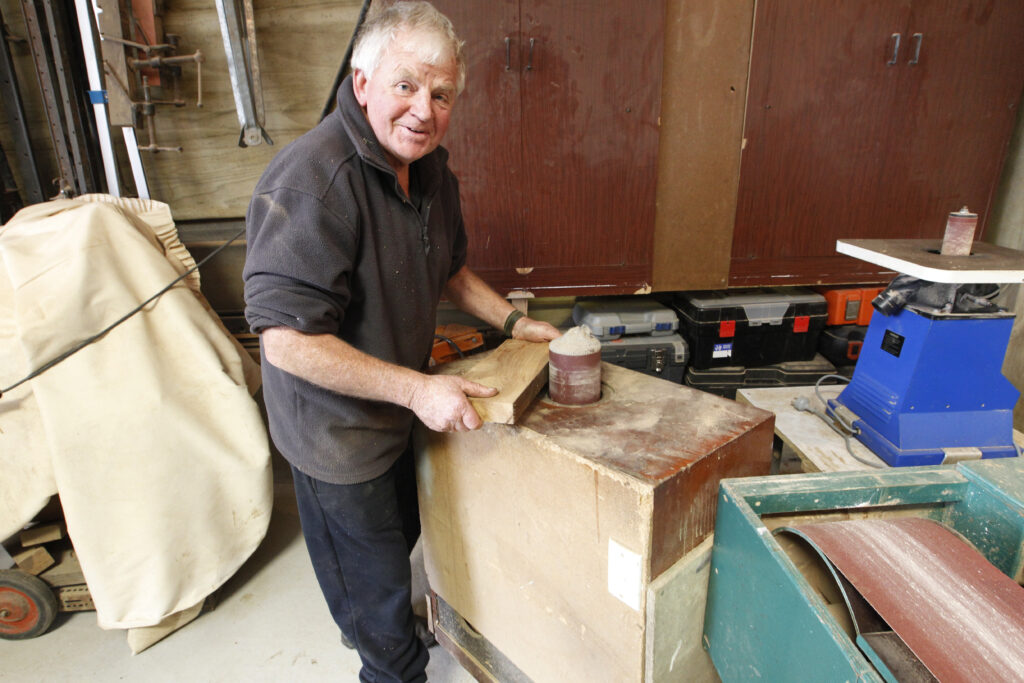
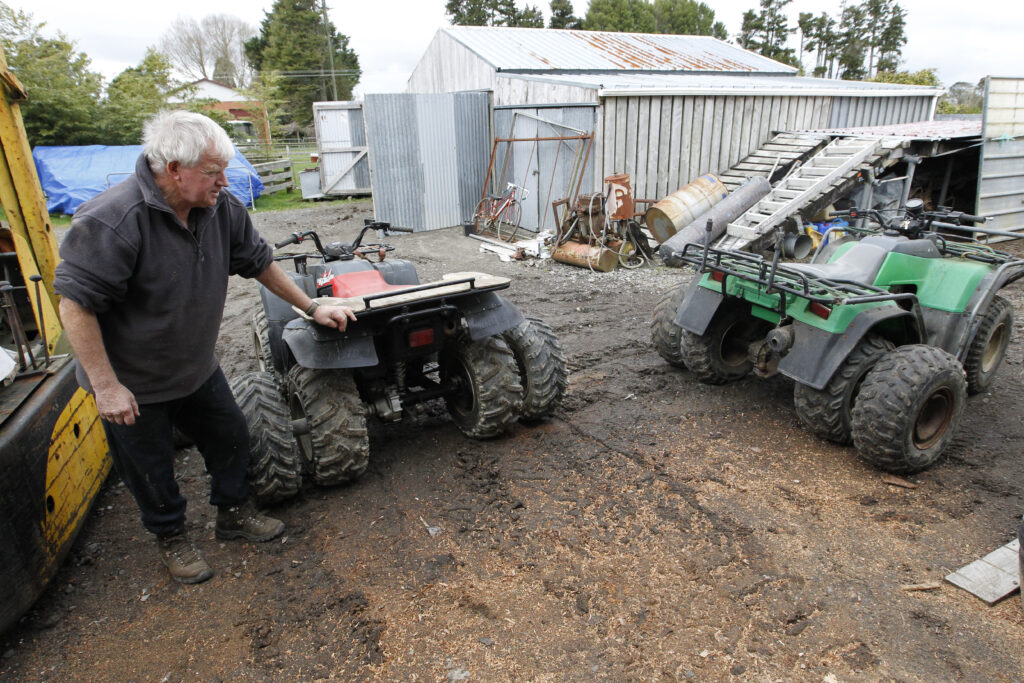
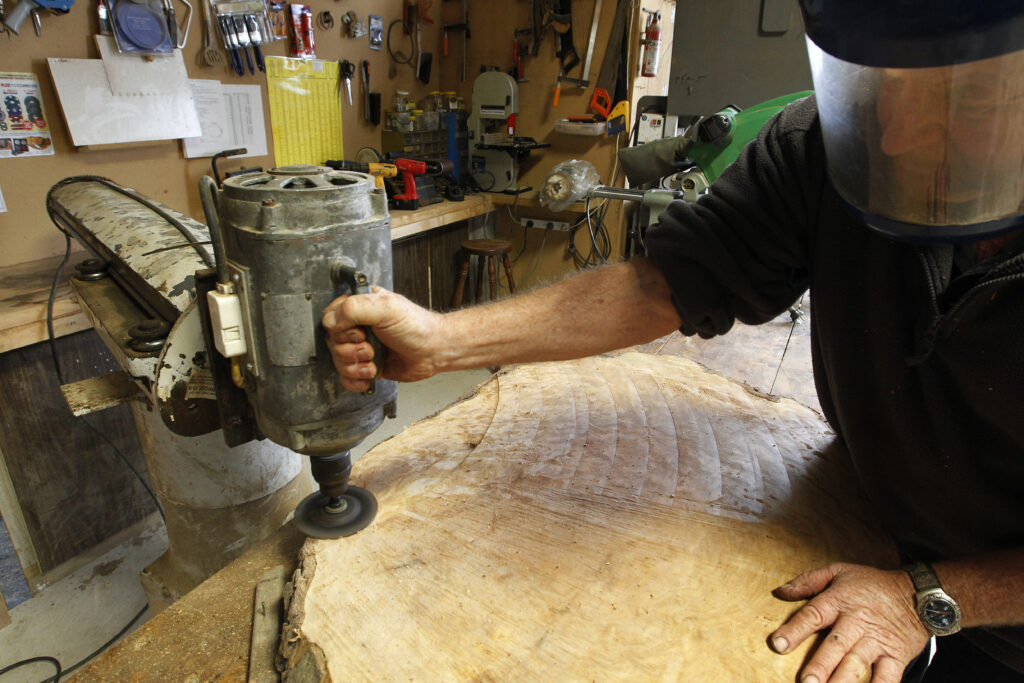
Timber
In the early 1990s, they brought 620 hectares of bush and scrub at Omoana, east of Eltham, for a hunting block. There was a lot of virgin bush and in 1995 they began harvesting rimu from the block, starting to work seriously with wood. The couple appeared on TV’s Country Calendar and Rural Delivery last year in programmes featuring their logging operation, which supplies timber to woodturners all over New Zealand.
Ross says they were always interested in making things from wood and a big shed on the property is crammed with all varieties waiting transformation. Ross says handling the trees with big burrs “fired us up. Heather was always into woodturning and we began to store away some great pieces of timber, especially burr wood, for later work.”
Ross’s carving specialty is making natural-edged furniture and he says he is not into square shapes. “It’s good to keep wood natural, so my carving’s all curves.” He has carved a number of nude human torsos and various animals, including a humpbacked whale with a calf on its back. His current project is making impressive deer antler chandeliers.
“I saw some photos years ago of guys making these in the States. It looked like a great project. You have to make time to do some things before you croak,” he says with a grin.
Ross had antlers from his hunting days and mates who had deer farms, so he got busy. He has made three so far, all different shapes.
“In the States, they often have high studs in their rooms, so they face the antlers standing up. Mine are flat for our lower ceiling Kiwi houses.
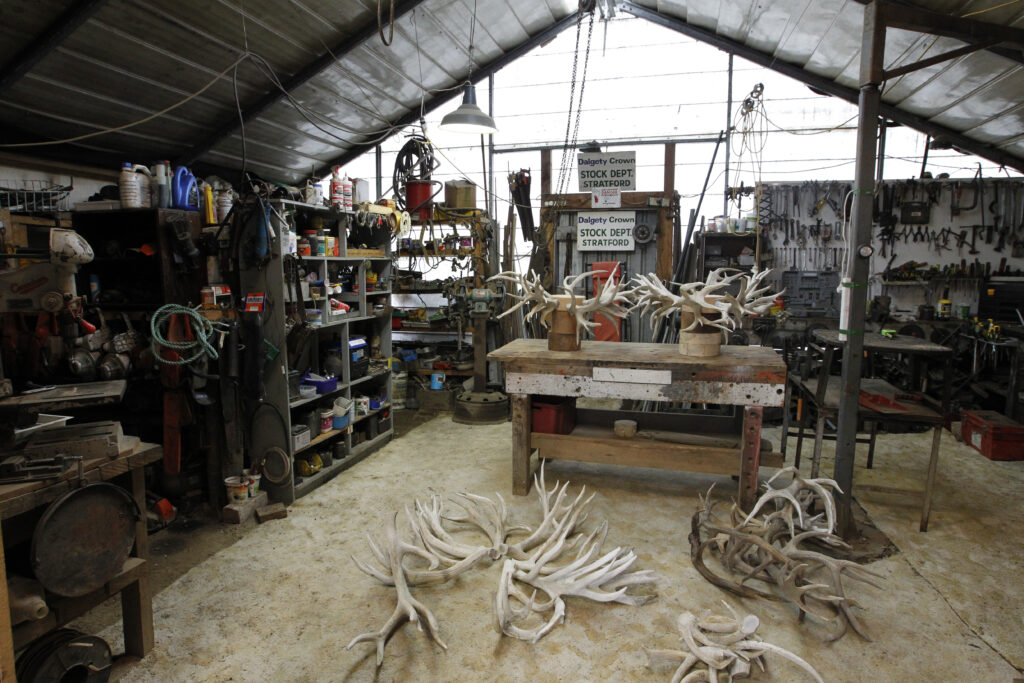
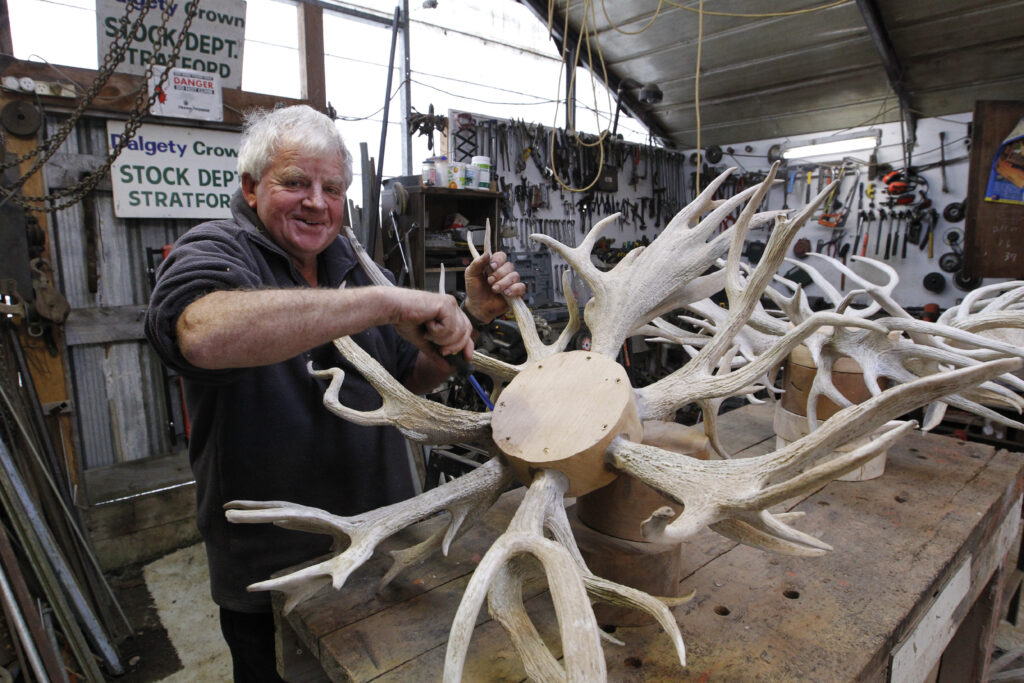
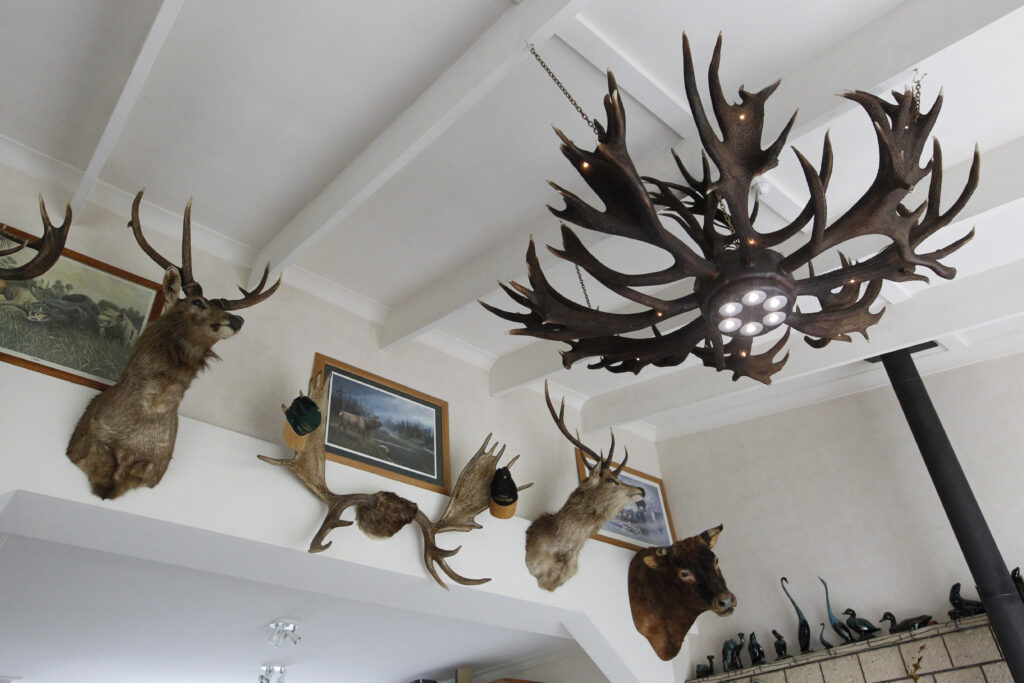
Workshop
Ross’s spacious workshop, one of many sheds on the property, is well-equipped. He has a 2.4 metre belt sander, a metal lathe, a Hitachi thicknesser/buzzer/saw combo, a drill press, biscuit jointer and drop saw.
His favourite tool is a home-made invention for thicknessing and levelling big pieces of timber. It’s an old Wadkin draw saw (with a one-metre draw) onto which he has mounted a vertical electric motor, which can take a variety of attachments. Big slabs of timber can be accurately levelled with this machine, which sits above a home-made, chain-driven bed.
He also has a sand-blasting machine in a special booth.
Ross likes to use air tools.
“There’s a huge variety of bits available. I mostly get them from America. There’s new wood tools coming out all the time, there’s some great stuff out there,” he said.
For carving, he uses an Archer rotary tool, after cutting pieces back with a disc grinder with King Arthur wood-grinding wheels. He uses power chisels for most of his chisel work.
“I like Flexcut carving chisels. Electric chisels are the way to go and a hell of a lot quicker to work with, although everything has its use, and sometimes a hand chisel is better for fine work.”
He has a Dremel tool for fine drilling and an electric file for some jobs. For fine sanding, he uses a home-made device. Heather bought him an electric toothbrush he didn’t use so he adapted it for fine sanding by attaching a small pad of sandpaper on it.
Another shed houses a five-metre-long, wood-drying kiln, with a heater and fan at one end. He uses a domestic dehumidifier to extract the moisture.
“Getting the moisture out made a huge difference to the time it takes to dry the wood. In four days, the dehumidifier extracted 22 litres of water from four slabs of mac [macrocarpa]. It’s fantastic.”
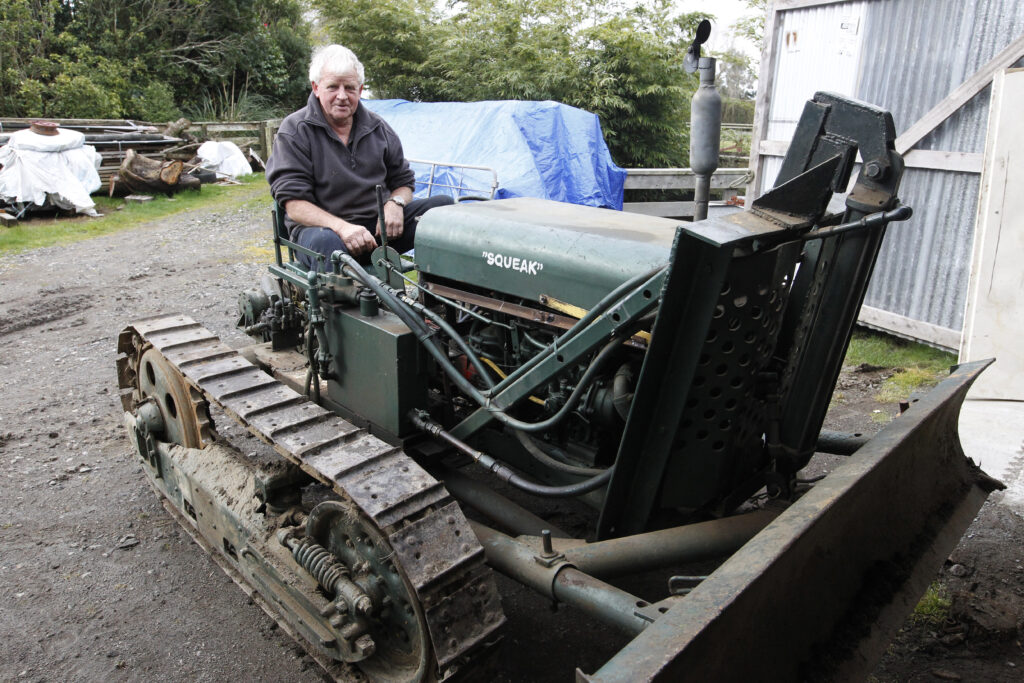
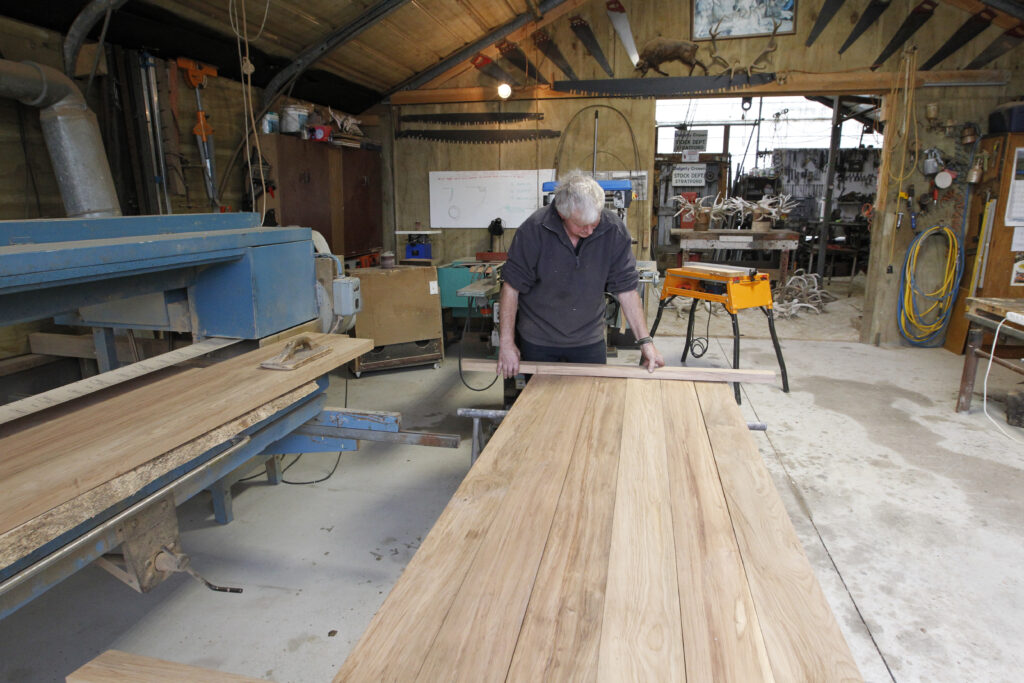
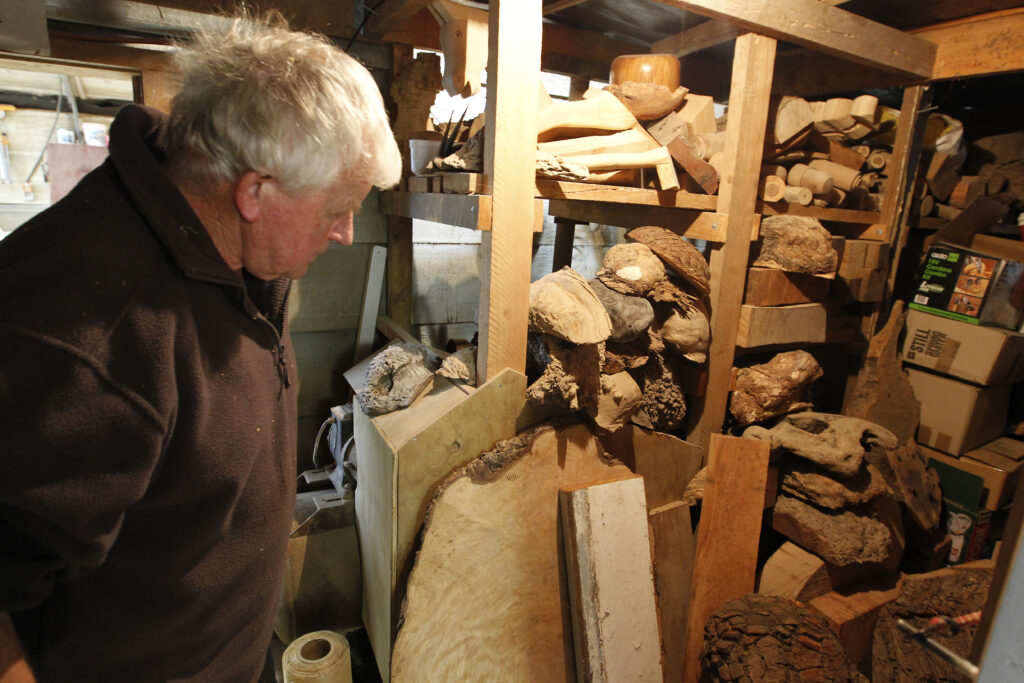
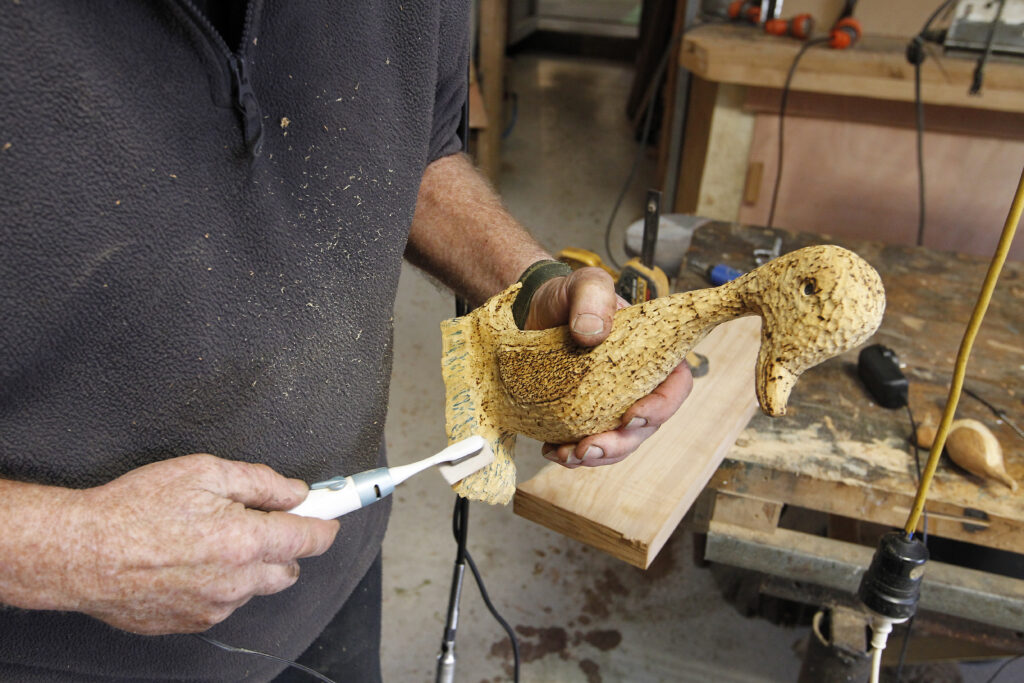
Inventions
Ross is a bit of an inventive engineer. When he was 16, he transformed a 1942 army Indian motorbike into a three-wheeler for the farm. This was before farm bikes and quads existed, and about the time Johnny Callender of New Plymouth came out with his Mountain Goat, a small, off-road two-wheeler.
Behind Ross’s shed are two quad bikes with two extra wheels on the back. Ross attached the wheels with a piece of three-inch pipe and some big washers onto the wheel bolts, and says it was a piece of cake to make. “They should make all farm bikes with six wheels. The bike is a lot more stable, and it would prevent a lot of accidents.”
An ancient forklift Ross uses also has two extra wheels on the back.
Out of one shed he fired up and drove out his baby – one of two 1935 Oliver O C 3 tractors with tracks. The tractor was underpowered so he put a Isuzu diesel motor in it. Then he was worried about safety as it had no brakes.
“I had a hydraulic pump and motor from an old Hesston windrower [used to cut hay and arrange it in windrows] took out the tractor clutch and attached it to the flywheel. By pushing your foot onto a pedal, you can go from slow to fast, taking your foot off if it stops. It makes a great braking system and there’s no clutch to worry about.”
On the back on the tractor Ross fitted a home-made winch made up from an old hydraulic pump.
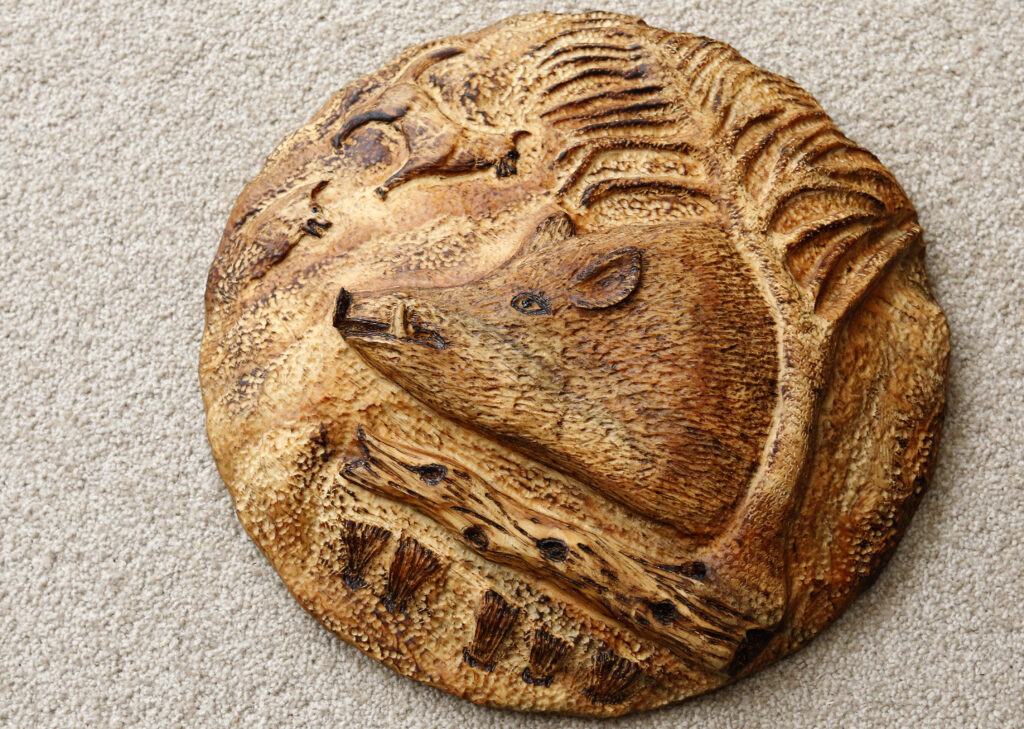
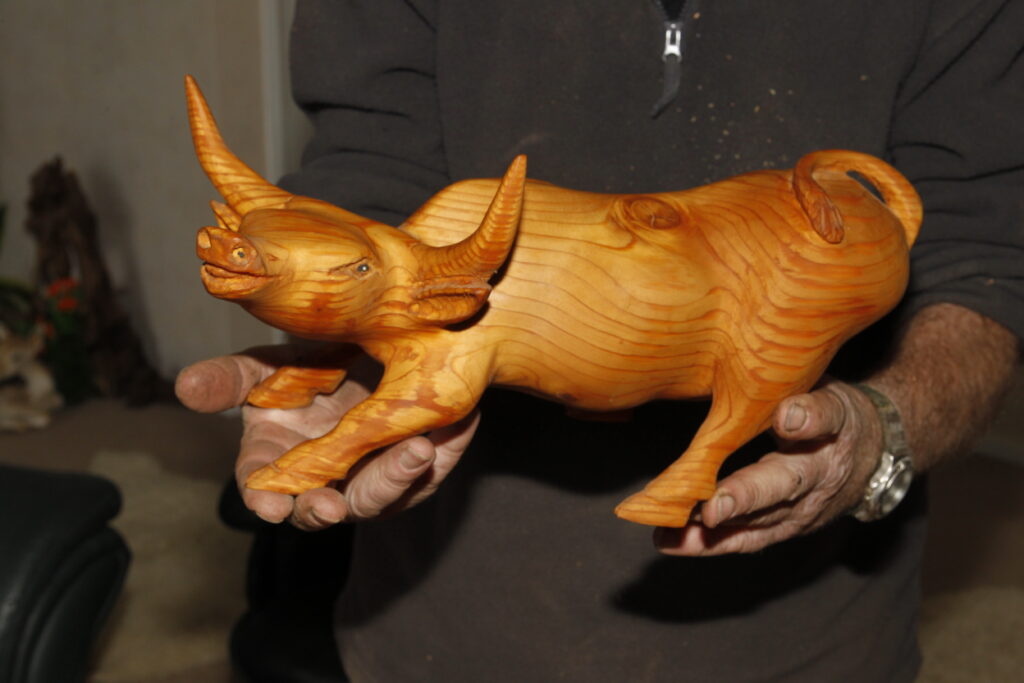
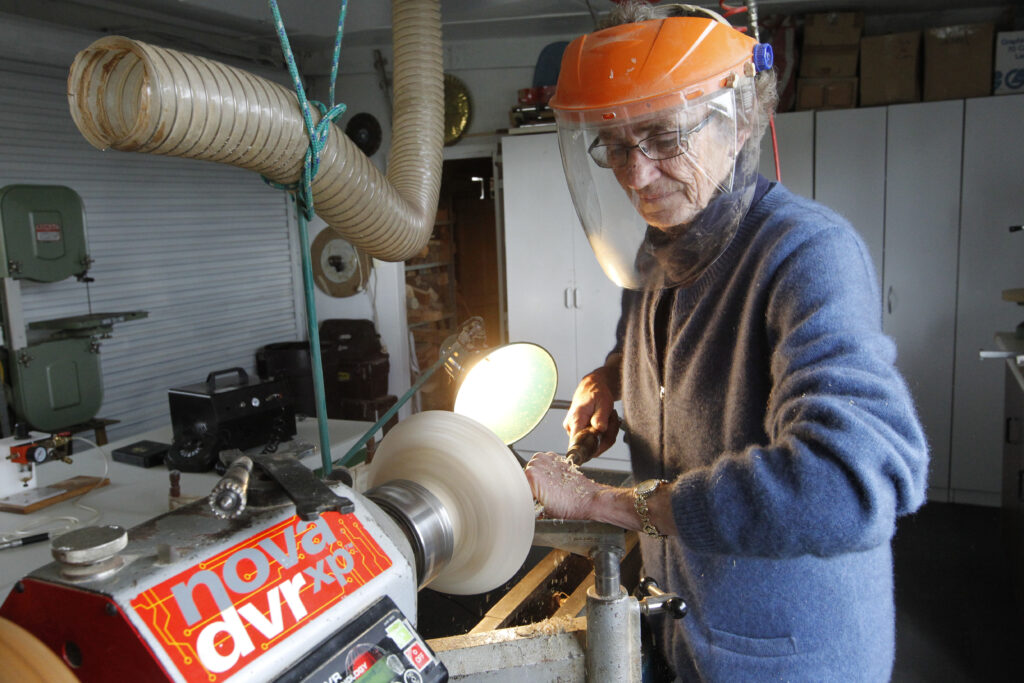
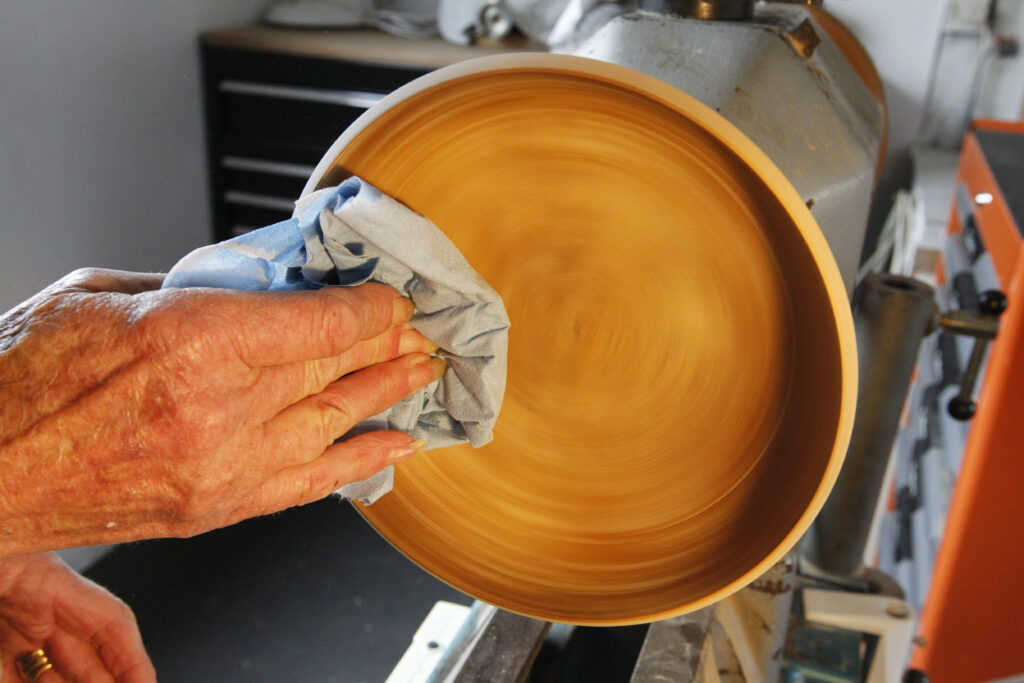
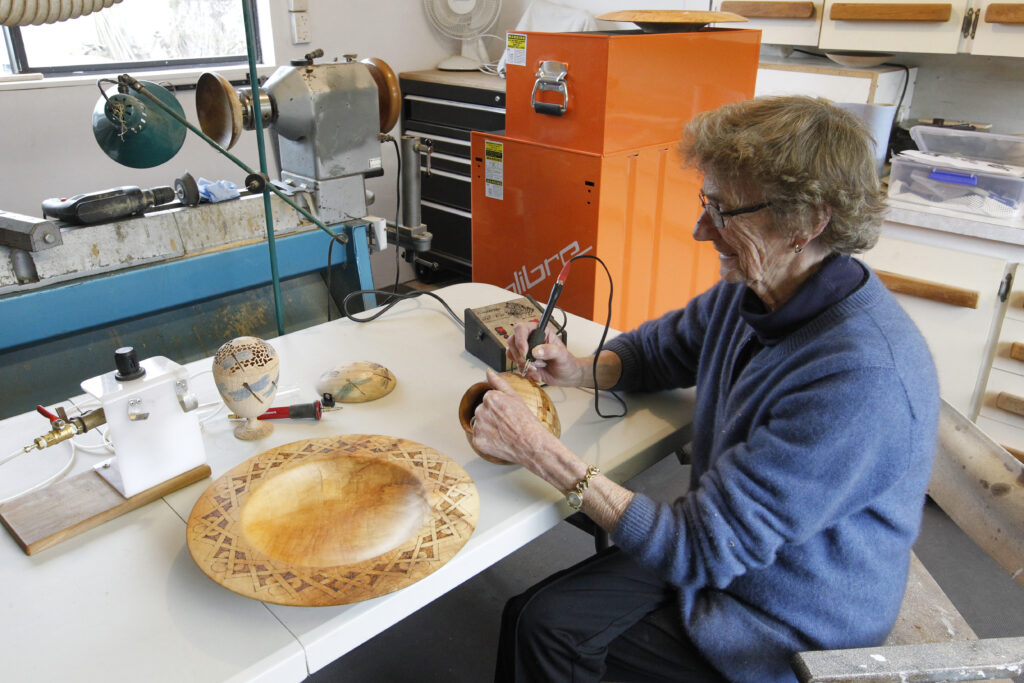
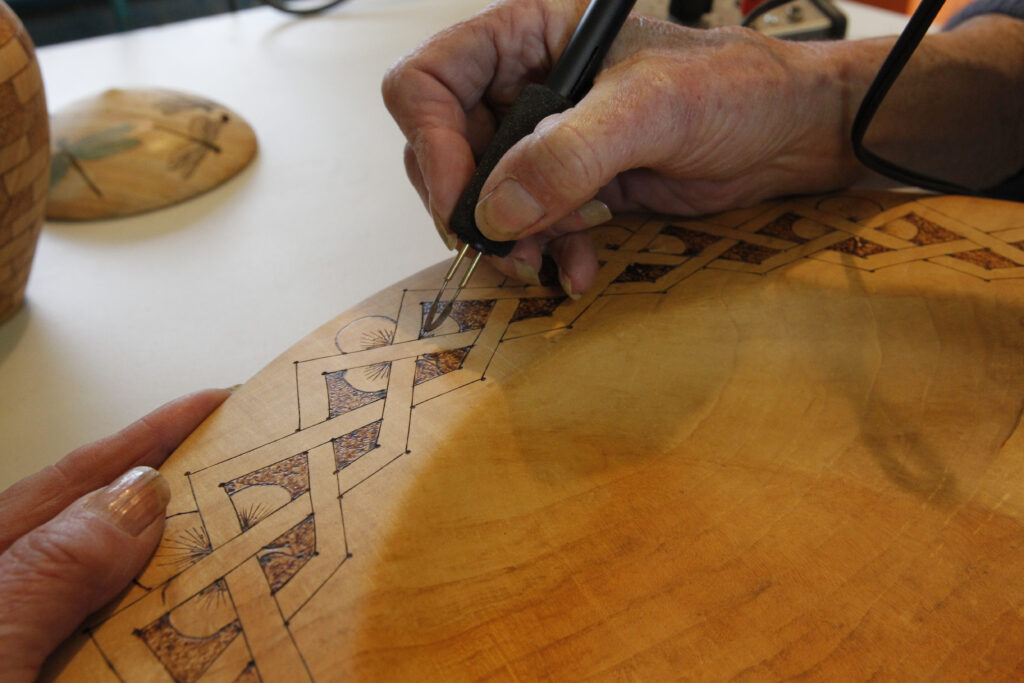
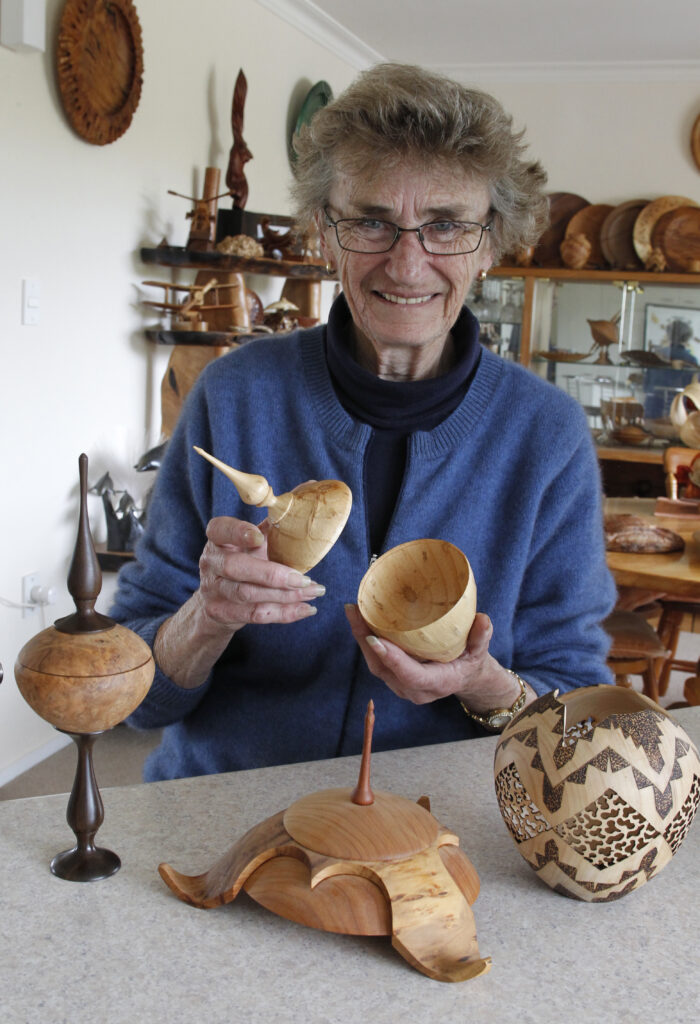
Heather, engineer
Heather was also raised on a Central Taranaki dairy farm. She married Ross in 1986 and, for 25 years, was a shift engineer at the Balance Urea fertiliser plant. She got her first lathe in the early 1980s and has been seriously turning wood for the past 15 years. In the early 1990s, she was involved in setting up the Stratford Woodturners Club, where she was, and still is, the only woman turning wood.
In 1998, she won a New Zealand competition with a clock made from burr gum wood.
“That gave me a lot of confidence and made me keen to explore and go further,” she says.
“We go to many woodturning days and weekends and demonstrations in New Zealand and Australia. That’s where you pick up new ideas. I started making platters and bowls, but watching what other people were turning out got me fired up. Harvesting our own wood from the back country block since 1995 gave me access to some very nice timber.”
In 2010, with six other Taranaki woodturners, Heather completed a Certificate in Woodturning. Tutor Jim Lowe travelled from the National School of Woodturning in Kapiti every two weeks to Taranaki. She says it was wonderful using both their workshops, spending 32 days of hands-on, then another 60 days doing homework to complete the 39 comprehensive modules required.
Heather says that over the past four years, since she retired, she has had more time to get into some delicate work and she shows examples of her vases and urns, very thin, turned pieces with filigree patterns, some with coloured dragonflies coloured with an airbrush.
“I have done a lot of finely turned work with rimu, but the dust gets up my nose and I need a mask. I enjoy working with any wood with a nice grain, especially macrocarpa, kauri and wood from fruit trees. I really enjoy working with wood, it makes me feel relaxed, and it’s very satisfying to look at your work at the end of the day.
“The challenge is to always try to do something better than before. To get placed in competitions against some high-class competition gives me encouragement.”
As well as a first placing in a national competition, Heather has taken away first place three times in Auckland competitions, won a second at Kawerau and two firsts at the Waitara Wood Show, plus other minor placings.
“I make my pieces for pleasure, not for sale, that suits me, there’s no pressure, and I go into the workshop when I feel like it. I give a lot of pieces away.”
Heather said there are very few women woodturners in New Zealand competing in national events. But while it’s always been a man’s activity in the past, things are changing in this close fraternity. “Woodturners are a different breed,” she says. “Everyone’s very friendly and happy to share ideas.”
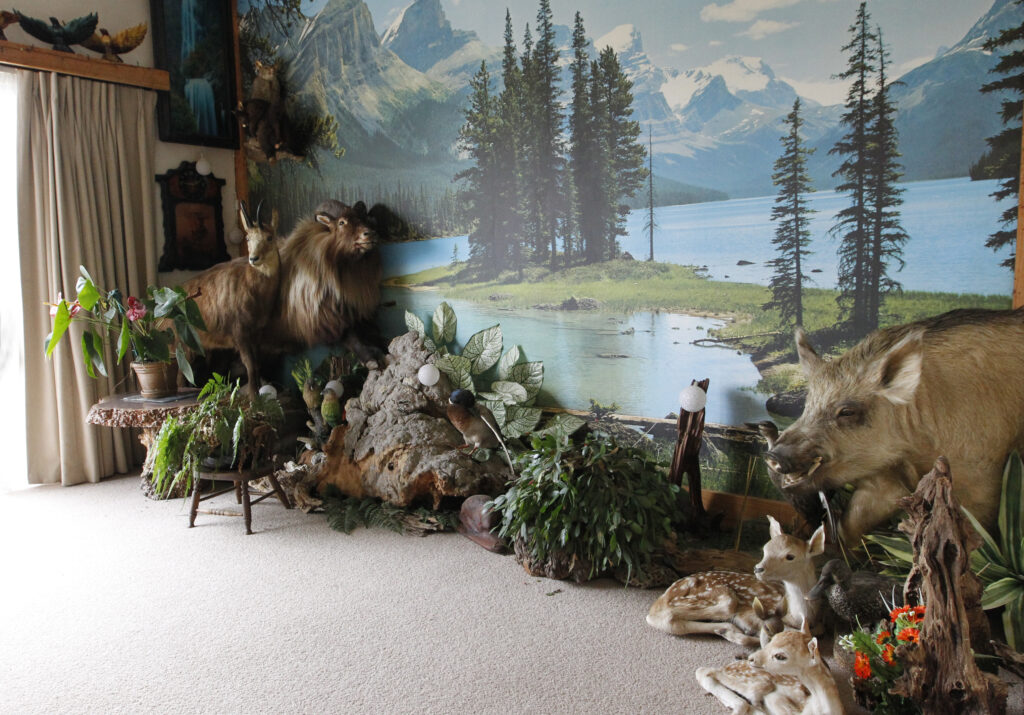
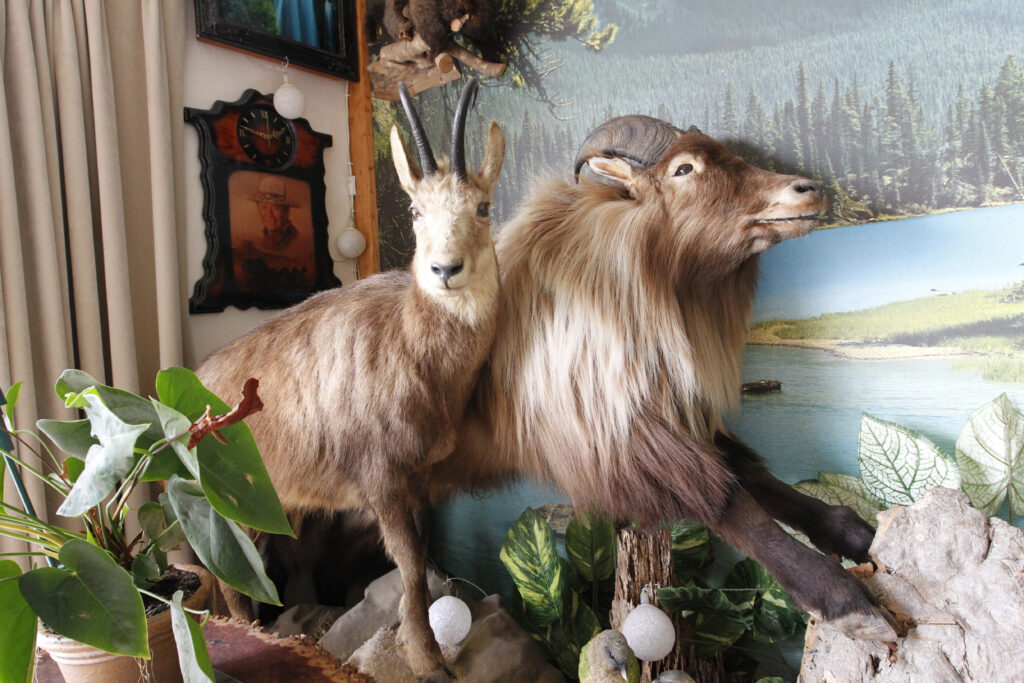
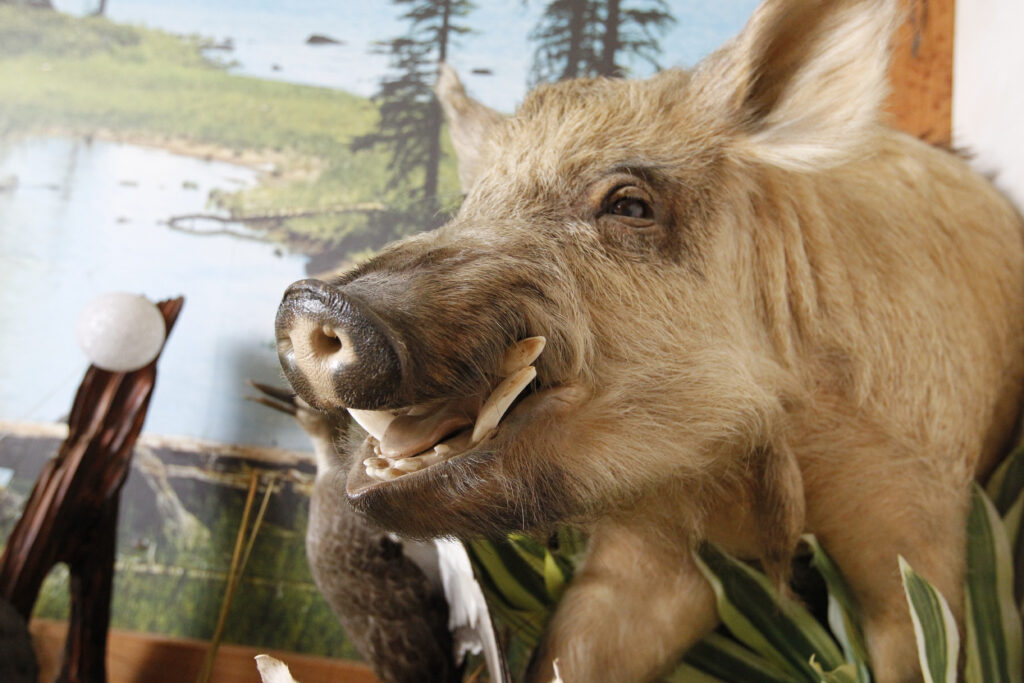
Tools
She has her own bandsaw and cuts the wood before turning it on her lathe. For her latticework and filigree urns, Heather pierces the turned work with a dental drill, which has a handpiece powered by a mini air compressor.
“It runs very fast, 400,000 rpm, and I turn the wood down to 2 mm thick before piercing the holes out. I generally use a carbide ‘fissure crosscut tapered’ cutting bit. I get a few breakages; it’s very delicate work.”
Her pokerwork is done with a Canadian 10 amp Razertip SS-D10. She has been using this for the past four years and says it gives great results. For airbrushing paint onto her work, Heather uses an Iwata hi-line airbrush.
As for really long-term plans Ross has one project in the pipeline. A project to die for. He has some macrocarpa set aside to build his own coffin.
“It’ll be a rough-sawn job and I want to be buried in it with a bottle of rum (he distils his own “medicine”), a portable radio tuned to Radio Live and half a dozen westerns to see me on my way,” he says with a smile.
